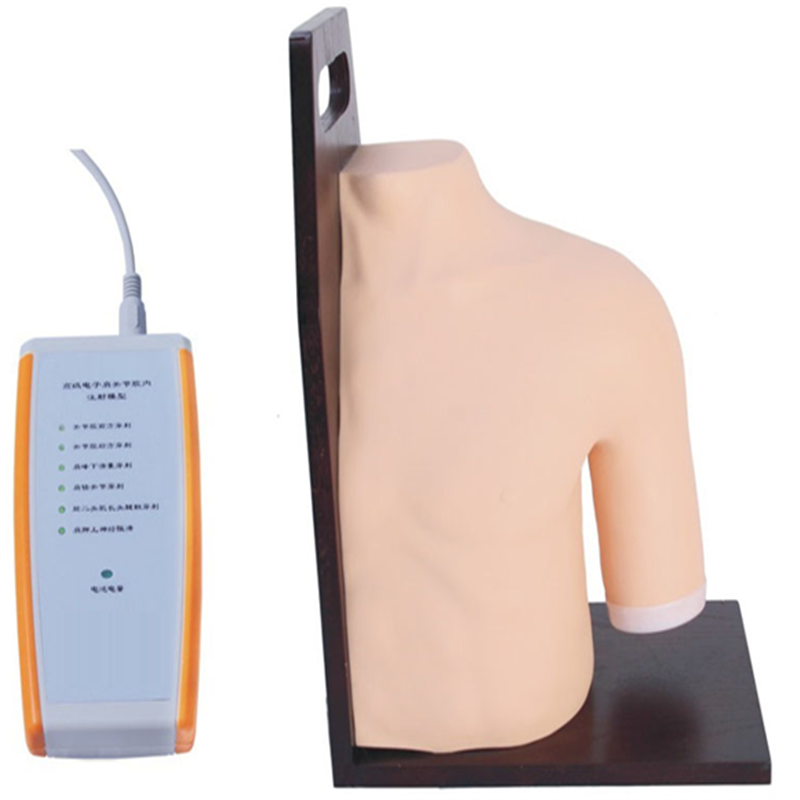Welcome to visitShanghai Chinon medical Model & Equipment Manufacturing Co., LTD
The intracavitary injection model of shoulder joint plays a vital role in clinical training. It is not only an important auxiliary tool of medical education, but also a key equipment to improve the professional skills of clinical medical staff. The following is the specific role of the intracavitary injection model in clinical training:

First, provide a real simulation environment
The intracavitary injection model of shoulder provides students with a close to real training environment by highly restoring the anatomy of the human shoulder, including key bones such as scapula, clavicle and humerus, as well as important muscles and ligaments such as deltoid and biceps. This simulated environment allows students to perform repeated puncture injections without touching real patients, thereby reducing operational risks for real patients.
2. Improve operational accuracy and safety
In clinical practice, the accuracy and safety of shoulder joint injection are directly related to the therapeutic effect and the patient's rehabilitation. Through the training of the intracavity injection model of shoulder joint, the trainees can master the correct puncture technique and position, and improve the accuracy and safety of the operation. The intelligent evaluation system on the model can give immediate feedback on whether the puncture is accurate, and help students correct mistakes in time, so as to reduce the occurrence of misoperation in clinical practice.
Third, cultivate clinical thinking and decision-making ability
In the process of model training, students not only need to master the puncture technology, but also need to make a comprehensive analysis according to the condition and anatomical characteristics of the simulated patient, and formulate a suitable puncture program. This training method helps to cultivate the students' clinical thinking and decision-making ability, so that they can flexibly cope with various complex situations in clinical practice.
4. Promote teamwork and communication
Shoulder injection model training often needs to be carried out in a team, which helps to develop the team spirit and communication skills among the students. In the training process, students need to collaborate with each other, discuss and solve problems together, so as to improve the cooperation ability and work efficiency of the whole team.
5. Reduce teaching costs
Compared with the traditional teaching method, the shoulder joint injection model has the advantages of being reusable, easy to clean and maintain, and can greatly reduce the teaching cost. At the same time, the model training is not limited by time and space, and can be flexibly arranged and adjusted according to the teaching needs.
To sum up, the intracavitary injection model of shoulder joint plays an irreplaceable role in clinical training. Not only does it improve participants' operational skills and safety, but it also fosters clinical thinking and decision-making, promotes teamwork and communication, and reduces teaching costs. Therefore, it is necessary and beneficial to widely use the intra - cavity injection model in medical education and clinical training.
|
NEXTпјљBovine acupuncture Model: How to improve veterinary acupuncture skills?
LASTпјљThe status of hemostatic model of traumatic severed limb in medical teaching AIDS |
Return list |